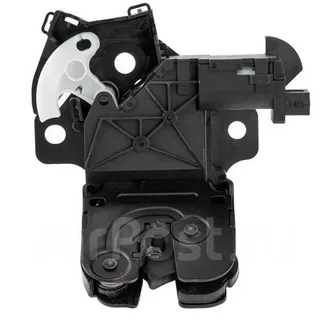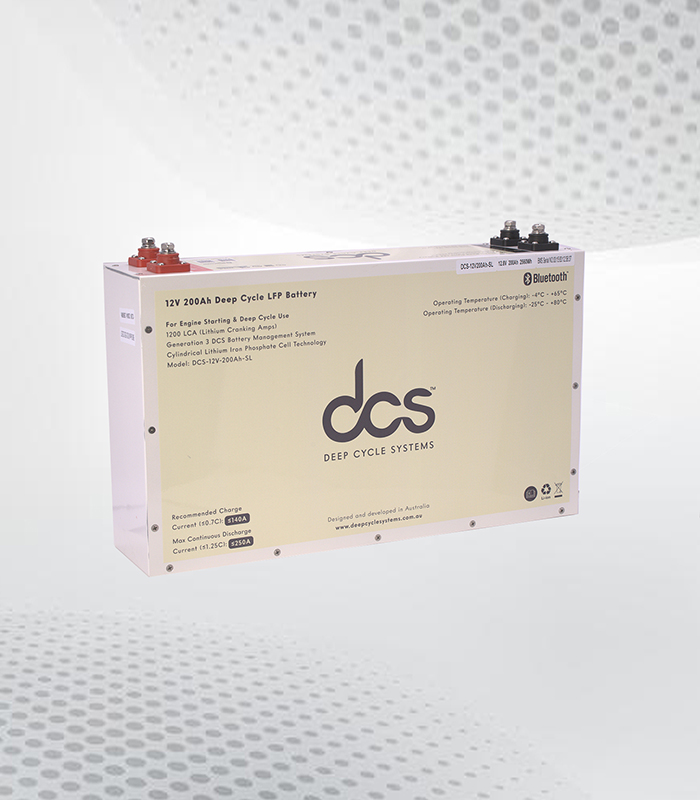The Kia Cerato Boot Latch is a crucial component that ensures the trunk of your vehicle opens and closes securely. A reliable boot latch is essential whether you’re using your car for daily errands or road trips. In this blog post, we will explore ways to improve the performance of your Kia Boot Latch to ensure it remains functional and efficient. Regular maintenance and timely inspections can help identify any issues before they become major problems. Additionally, lubricating the latch mechanism with a suitable product can prevent it from becoming stiff or jammed.
Understanding the Kia Boot Latch
The boot latch in a Kia vehicle plays a crucial role in securing the trunk or hatchback, ensuring that your belongings remain safe during transit. They understand how the boot latch functions and the common issues that can arise, which is essential for maintaining your vehicle’s integrity.
The boot latch system typically consists of several components: the latch itself, the release mechanism (usually a button or lever), and the connecting cables or rods. When you press the release button or pull the lever, a cable releases the latch, allowing the boot to open. Over time, wear and tear can affect the performance of these components, leading to issues such as a boot that doesn’t latch properly or can’t be opened.
One of the most common problems with Kia boot latches is difficulty opening or closing the boot. This may be due to a faulty release mechanism, a misaligned latch, or even debris obstructing the latch assembly. Regular cleaning of the latch area can help prevent dirt buildup, which can impede its function. Lubricating the latch and its moving parts with a silicone spray or similar product can also enhance performance and longevity.
In some cases, electronic boot latches may be equipped with sensors that prevent the boot from closing if an object is detected. If these sensors malfunction, they may cause the boot to remain ajar or not close completely. Diagnosing such issues often requires specialised equipment and knowledge, so consulting a professional mechanic is advisable.
Understanding your Kia’s boot latch is vital for maintaining your vehicle’s functionality. Regular maintenance, including cleaning and lubrication, can help prevent common issues, ensuring your boot operates smoothly and securely. If problems persist, seek professional assistance to avoid further complications.
Common Issues with the Boot Latch
The boot latch, an essential component of your vehicle’s trunk or hatchback, can encounter various problems that may hinder its proper functioning. Understanding these common issues can help you diagnose and resolve them promptly.
1. Sticking or Jammed Latch
One of the most frequent issues with boot latches is that they can become sticky or jammed due to dirt, debris, or corrosion. When this happens, the latch may not engage or disengage smoothly, making it difficult to open or close the boot. Regular cleaning and lubrication of the latch mechanism can help prevent this problem.
2. Misalignment
Misalignment of the boot latch can occur due to a collision or wear and tear over time. When the latch is misaligned, it may not catch properly, leading to the boot not closing securely. This issue can also trigger warning lights on your dashboard, indicating that the boot is not closed correctly.
3. Faulty Wiring
In vehicles equipped with electronic boot latches, faulty wiring can lead to issues with the latch not responding to the release button. Inspecting the wiring for frays or disconnections and ensuring proper connections can help address this problem.
4. Broken Latch
In some cases, the latch itself can break, preventing the boot from staying closed. This typically requires the replacement of the latch mechanism, which can be done by a professional or as a DIY project if you have the right tools and knowledge.
Addressing these common issues early can ensure your boot latch operates smoothly and securely.
Diagnosing Boot Latch Problems
When your vehicle’s boot latch malfunctions, it can lead to frustration and inconvenience. Diagnosing boot latch problems involves a systematic approach to identify the root cause and implement effective solutions. Common symptoms of a faulty boot latch include difficulty opening or closing the boot, unusual noises during operation, and misalignment of the latch mechanism.
The first step in diagnosing boot latch issues is visually inspecting the latch mechanism. Look for any signs of physical damage, such as rust, corrosion, or debris that may obstruct its movement. Ensure the latch is properly aligned with the striker plate, as misalignment can prevent the latch from engaging or releasing properly. Clean the area and make necessary adjustments if you notice any visible obstructions or misalignments.
Next, test the electrical components associated with the boot latch. In many modern vehicles, the boot latch is electronically controlled. Check the wiring harness for any signs of wear or damage, and inspect the connectors to ensure they are secure. A multimeter is used to test the continuity of the electrical circuit; a lack of voltage could indicate a blown fuse or a faulty switch.
Another potential issue could be a worn or damaged actuator. The actuator moves the latch mechanism when you press the button to open the boot. If the actuator is malfunctioning, it may need to be replaced. Listening to clicking sounds from the actuator when you press the button can help confirm whether it is functioning correctly.
Finally, consider consulting a professional mechanic if these steps do not resolve the issue. They can provide advanced diagnostics using specialised tools and expertise to identify and rectify more complex problems. By systematically addressing these areas, you can effectively diagnose and resolve boot latch problems, ensuring your vehicle’s functionality and security.
Maintenance Tips for Your Boot Latch
The boot latch is crucial in keeping your vehicle’s trunk secure and functional. Regular maintenance can help ensure it operates smoothly and lasts longer. Here are some essential tips for maintaining your boot latch:
1. Keep It Clean
Dirt and debris can accumulate in and around the boot latch, leading to potential malfunction. Regularly clean the latch area with a soft cloth and a mild cleaner. Avoid using harsh chemicals that can damage the latch’s finish.
2. Lubricate the Mechanism
A well-lubricated boot latch will operate more smoothly and resist wear. Use a silicone-based lubricant or a lithium grease spray to lubricate the latch and its components. Apply the lubricant sparingly to avoid attracting more dirt.
3. Check for Wear and Tear
Inspect the boot latch regularly for signs of wear or damage. Look for rust, cracks, or misalignment. If you notice any issues, replace the latch promptly to prevent further complications.
4. Test the Functionality
Periodically test the boot latch to ensure it opens and closes smoothly. Listen for any unusual noises that could indicate a problem. The latch may require adjustment or replacement if it feels stiff or does not engage properly.
5. Seal Integrity
Ensure that the weather seals around the boot latch are intact. Damaged seals can allow moisture to enter, leading to rust and corrosion. Replace any worn seals to maintain a tight seal and protect the latch.
By following these maintenance tips, you can ensure your boot latch remains in excellent condition and provides secure access to your vehicle’s trunk for years to come.
Upgrading Your Kia Boot Latch
Upgrading your Kia’s boot latch can significantly enhance your vehicle’s functionality and security. The boot latch, or trunk latch, is a crucial component that ensures your cargo is safely secured while driving. Over time, wear and tear, exposure to the elements, and even minor accidents can compromise the effectiveness of the boot latch, leading to issues such as difficulty in opening or closing the boot or, in the worst cases, its failing to latch altogether.
When considering an upgrade, it’s essential to choose a latch that fits your specific Kia model and offers improved durability and performance. Many aftermarket options utilise stronger materials and advanced designs for more reliable closure. Look for latches made from high-quality metals or reinforced plastics, as these materials are more resistant to corrosion and damage. Additionally, some upgraded latches have enhanced locking mechanisms, providing security against theft.
Installation of a new boot latch is typically straightforward, requiring only basic tools. Remove the trim around the boot area to access the existing latch. Carefully detach the old latch, noting the placement of screws and connectors to ensure proper installation of the new unit. Once the new latch is securely in place, reattach the trim and test the functionality by opening and closing the boot several times. It’s important to check that the latch engages smoothly and securely.
In conclusion, upgrading your Kia boot latch can offer numerous benefits, including improved security and ease of use. Whether you’re looking for a simple replacement or a high-performance option, investing in a quality boot latch will enhance your overall driving experience and ensure your belongings are safe on the road.
Troubleshooting the Kia Cerato Boot Lock issues
The boot lock of your Kia Cerato is essential for securing your vehicle’s cargo area. However, issues can arise that prevent it from functioning correctly. Here are some common problems and their potential solutions.
Common Issues
Key Fob Malfunction:
If the boot won’t unlock with the key fob, ensure that the fob’s battery is charged. A weak battery can impede the signal, preventing the lock from responding. If the battery is fine, try reprogramming the key fob or using the physical key as a backup.
Electrical Issues:
The Kia Cerato Boot Lock operates through an electrical system that may face faults. Check for blown fuses related to the central locking system. Consult your vehicle’s manual for the fuse box location and specifications.
Mechanical Failure:
Over time, the lock mechanism can become jammed or damaged. Inspect the boot lock assembly for any visible obstructions or signs of wear. Lubricating the lock mechanism may resolve sticking issues. If the lock is broken, it may require replacement.
Wiring Problems:
Damaged or corroded wiring can disrupt power to the boot lock. Inspect the wiring harness connecting to the boot lock for any signs of wear or damage. Repair or replace any compromised wires.
Troubleshooting your Kia Cerato’s boot lock involves checking the electrical and mechanical components. Regular maintenance can prevent these issues and ensure the proper functioning of your vehicle’s locking mechanisms. If problems persist, consulting a professional mechanic for a thorough diagnosis is recommended.
Conclusion
Maintaining the Kia Cerato Boot Latch ensures your trunk operates smoothly and securely. Addressing mechanical and electrical issues promptly can prevent more significant problems. Regular inspections and keeping the latch clean and lubricated can help extend its lifespan and improve functionality. If persistent problems arise, consider upgrading to a more advanced latch for better performance and reliability. Consulting a professional for installation and complex troubleshooting can provide peace of mind and ensure optimal operation. Investing time and effort into maintaining your boot latch enhances convenience and contributes to your vehicle’s overall safety and security.
FAQS
Q: How often should I maintain my Kia Boot Latch?
A: Regular maintenance, including cleaning and lubrication, should be performed every few months or as needed based on usage.
Q: What should I do if my boot latch is not responding to the key fob?
A: First, check the key fob battery. If the battery is functioning, inspect the wiring and connectors for any signs of damage. You may also need to test the central locking system.
Q: Can I replace the Kia Cerato Boot Latch myself?
A: While some people may feel comfortable replacing the Kia Cerato Boot Latch independently, it’s often best to consult a professional to ensure correct installation and avoid potential issues.
| Related Business Listings |
| Contact Directory |
| Local Business Profiles |




